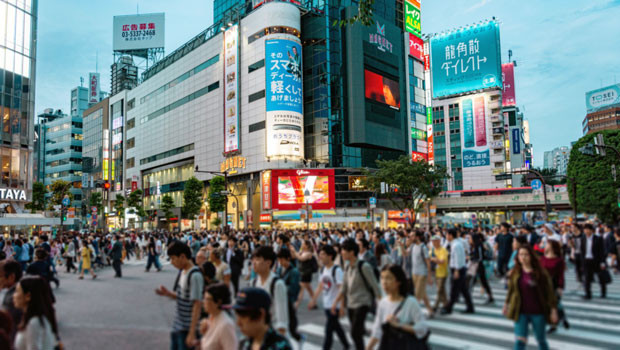Asia report: Stocks rise as Japan's economy shrinks less than expected

Stocks in Asia were mostly higher by the end of trading on Wednesday, after fresh data out of Tokyo showed Japan’s economy shrank at a slower rate than anticipated in the first quarter of the year.
In Japan, the Nikkei 225 was up 0.94% at 26,911.20, as the yen strengthened 0.22% on the dollar to last trade at JPY 129.09.
Fashion firm Fast Retailing was down 0.33%, while among the benchmark’s other major components, automation specialist Fanuc squeezed out a 0.03% rise, and technology conglomerate SoftBank Group advanced 0.29%.
The broader Topix index was 0.96% firmer by the end of trading in Tokyo, closing at 1,884.69.
Fresh official data released earlier in the session showed Japan’s economic activity contracted by 1% quarter-on-quarter in the three months through March.
That was much less than the 1.8% shrinkage anticipated by economists polled by Reuters, as the country grappled with an outbreak of the Omicron variant of Covid-19 early in the period.
“The other key contributor to the slowdown was net exports, which shaved 0.4% from quarterly growth, after adding 0.1% in the fourth quarter, with surging energy prices pushing imports higher, and China’s zero-Covid slowdown weighing on export demand,” said Craig Botham at Pantheon Macroeconomics.
“Gross fixed capital formation, at -0.8% quarter-on-quarter from -0.7% previously, was a major drag overall, but largely unchanged from the prior quarter, even after revisions.
“Weaker public and residential investment is offsetting accelerating non-residential investment, for now.”
Botham said overall domestic demand growth remained “just” in positive territory, at 0.1% on the quarter from 0.9% in the final three months of 2021, due to government spending, which grew 0.7% quarter-on-quarter after falling 0.3% in the fourth quarter, including energy subsidies.
Inventories also made a small positive contribution in the period, reversing the drag in the prior three months.
Craig Botham said revisions lowered the contribution of inventories and exports in the fourth quarter, but were relatively minor.
“Government spending should continue to support growth in the second quarter, with another emergency budget on track for approval to finance a relief package designed to offset the increase in living costs stemming from Russia’s invasion of Ukraine.
“We expect consumption to recover, thanks both to this support, alongside other consumption subsidies, and as the retail sector rebounds from zero-Covid.”
Botham added that investment would likely face continued headwinds from higher energy costs and slowing global demand, but was still “well below” the trend.
“As public sector investment picks up with the implementation of the latest budget, we should see a quarter-on-quarter improvement in the second quarter.”
On the mainland, the Shanghai Composite was 0.25% weaker at 3,085.98, and the smaller, technology-heavy Shenzhen Composite eked out gains of 0.08% to 1,941.54.
South Korea’s Kospi managed gains of 0.21% to 2,625.98, while the Hang Seng Index in Hong Kong added 0.2% to 20,644.28.
Seoul’s blue-chip technology stocks were in the green, with Samsung Electronics up 0.74% and SK Hynix rising 0.89%.
Oil prices were higher at the end of the Asian day, with Brent crude futures last up 0.88% on ICE at $112.92 per barrel, and the NYMEX quote for West Texas Intermediate 1.19% firmer at $113.74.
In Australia, the S&P/ASX 200 advanced 0.99% to 7,182.70, while across the Tasman Sea, New Zealand’s S&P/NZX 50 jumped 1.08% to 11,258.28.
The down under dollars painted a mixed picture against the greenback, with the Aussie last 0.01% weaker at AUD 1.4253, while the Kiwi strengthened 0.02% to NZD 1.5718.
Reporting by Josh White at Sharecast.com.